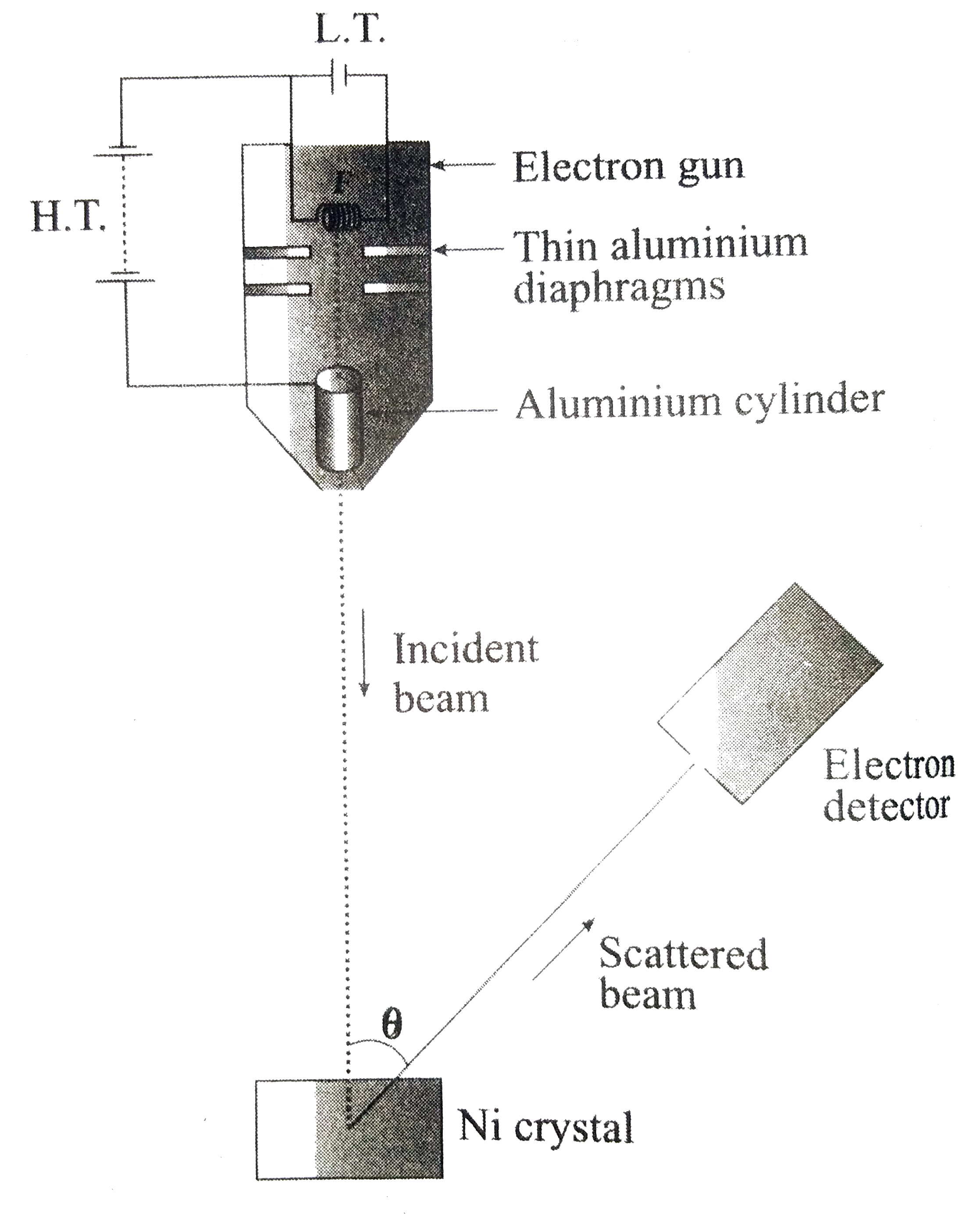Describe briefly Davisson-Germer experiment which demontrated the wave nature of electrons
Text Solution
De Broglie hypothesis of matter waves was experimentally confirmed by clinton Davisson and Lester Germer in 1927. Since crystal can act as a three dimensional diffraction grating for matter waves, the electron waves incident an crystals are diffracted off in certain specific directions. Figure shows a schematic representation of the apparatus for the experiment

The filament F is heated by a low tension battery. Electrons are emitted from the hot filament by thermionic emission. They are then acceleration due to the potential difference between the filament and the anode aluminium cylinder by a high tension battery. Electron beam is collimated by using two thin aluminium diaphragms and is allowed to strike a single crystal of Nickel. The electrons scattered by Ni atoms in different directions are received by the electron detector which measures the intensity of scattered electron beam. The detector is rotatable in the plane of the paper so that the angle 0 between the incident beam and the scattered beam can be changed at our will. The intensity of the scattered electron beam is measured as a function of the angle θ

The above figure shows the results of Davisson and Germer experiment. Clearly, there is strong peak corresponding to a sharp diffraction maximum in the electron distribution at an accelerating voltage of 54V and scattering angle 50∘. This peak in intensity is attributed to the constructive interference of electrons diffracted from various atomic layers of the target material. From the known value of interplanar spacing of Nickel, the wavelength of the electron wave has been experimentally calculated as 1.65A
From de-Broglie hypothesis, the wavelength associated with an elecctron beam accelerated through 54V must be
λ=hmv=12.27√VA
=12.27√54=1.67A
This value agrees well with the experimentally observed wavelength of 1.65A. Thus this experiment directly verifies de Broglie.s hypothesis of the wave nature of moving particles.
|
Similar Questions
How does Davisson and Germer's experiment verify the wave nature of electrons ?
View SolutionThe Davisson-Germer experiments that first demonstrated the wave nature of matter used electron accelerated to 54eV. The wavelength (in Ao ) of the electrons in the Davisson-Germer experiment is
View Solution
Knowledge Check
Statement-1: Davisson-Germer experiment established the wave nature of electron
Statement-2: If electrons have wave nature, they can interfere show differaction.AStatement-1 is true, Statement-2 is true and Statement-2 is correct explanation of Statement-1.BStatement-1 is true, Statement-2 is true, but Statement-2 is not a correct explanation of Statement-1.CStatement-1 is true, but Statement-2 is falseDStatement-1 is false, but Statement-2 is true.Davisson and Germer experiment proved
AWave nature of lightBParticle nature of lightCBoth (a) and (b)DNeither (a) nor (b)Davisson and Germer's experiment showed that.
Aβ - particles are electronsBElectrons come from nucleusCElectrons show wave natureDNone of the above
Statement-1: Davisson-Germer experiment established the wave nature of electron
Statement-2: If electrons have wave nature, they can interfere show differaction.
View SolutionBrugg's Law|| Davisson-Germer Experiment
View SolutionBragg's Law||Davisson-Germer Experiment
View SolutionWhat inference was drawn from Davisson and Germer experiment regarding the nature of electron?
View SolutionDavisson - Germer experiment establishes the .............nature of slow moving electrons.
View Solution
